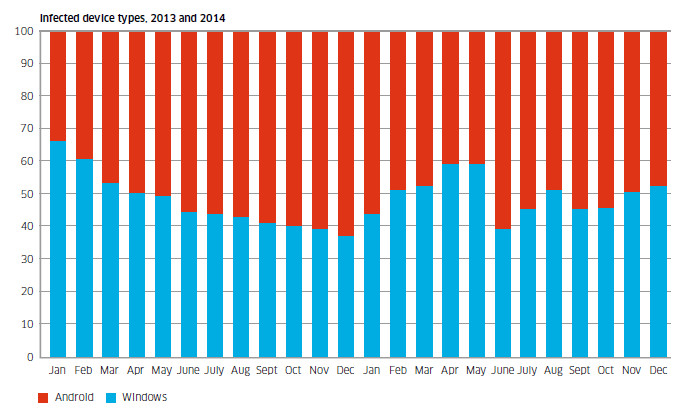
2014 will be remembered as the year of cyber-attacks.
We witnessed hackers stealing millions of credit and debit card account numbers at the retail point of sale. In the U.S. alone, the November 2013 security breach at Target was repeated in 2014 at Staples, Home Depot Sally Beauty Supply, Neiman Marcus, United Parcel Service, Michaels Stores and Albertsons, as well as the food chains Dairy Queen and P. F. Chang. The U.S. Department of Homeland Security estimated that 1,000 American merchants in total were hacked.
There was the high profile corporate security attack on Sony that was quickly followed by attacks that shut down PlayStation and Xbox Live gaming networks for days. There were also numerous intrusions on service provider and government networks.
But the combined number of these attacks is pale in comparison to the malware attacks on mobile and residential devices. Stealing personal information and data minutes from individual device users doesn’t tend to make the news, but it’s happening with increased frequency. And the consequences of losing one’s financial information, privacy, and personal identity to cyber criminals are no less important when it’s you.
The mobile revolution is clearly driving the jump in malware attacks. In a new report published by Motive Security Labs (PDF), mobile malware infections rose by 25% in 2014. And while the mobile infection rate is just 0.68%, that conservatively translates into about 16 million mobile devices worldwide.

The simple fact is mobile consumers don’t take the necessary security precautions to protect their devices and even when they do, malware can easily evade detection by device security based anti-virus. Meanwhile mobile malware is getting smarter. Its sophistication is growing and attackers are getting better at compromising systems.
In mobile networks, Android devices have now caught up to Windows laptops as the primary workhorse of cybercrime. With one billion Android devices shipped in 2014, the platform is a favorite target of cybercriminals who can have lots of infection success without a lot of work. Android is more exposed than rivals because of its open platform and by allowing users to download apps from third-party stores where apps are not always well vetted.
The rise of mobile malware threats isn’t unexpected. But as Google Wallet, Apple Pay and others rush to bring us mobile payment systems, security has to be a top focus. And malware concerns become even more acute in the workplace where more than 90% of workers admit to using their personal smartphones for work purposes.
If malware is the foil, service providers have an opportunity to play the hero. A Motive Security Labs survey found that 65% of subscribers expect their service provider to protect both their mobile and home devices. Fifty-five percent indicated they would be willing to pay for such a service. Service providers have a vested interest in ensuring malware doesn’t invade their network or sour the subscriber service experience.
By the end of 2015, the number of smartphone users worldwide will surpass 2 billion, representing more than a quarter of the global population. There’s no reason to believe malware threats won’t be even more intrusive this year and the foreseeable future.
Source : Alcatel-Lucent
© 2011-2025 All rights reserved